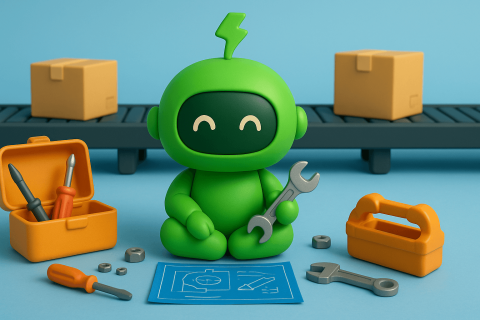
Workflows help your Shopify store run more efficiently. Whether you’re tagging customers, notifying your team, or syncing data to other tools, automation keeps things moving without constant oversight.
Shopify offers basic workflow tools through Shopify Flow. It’s a helpful place to start, but most stores eventually need more power, more triggers, and more flexibility.
What is a Shopify workflow?
A workflow is a series of automated steps that respond to something happening in your store. It could be as simple as tagging a customer after their first order — or as complex as sending a vendor alert, updating product data, and notifying your ops team all from the same order event.
Workflows help you move faster by removing the need to handle every small task manually. Instead of catching every detail by hand, your automation runs in the background, ensuring things happen at the right time — with no one needing to press a button.
How to create a workflow using Shopify Flow
Shopify Flow is available on all paid Shopify plans. You’ll find it under Settings > Flow inside your admin. The interface lets you choose a trigger (like “order created”), set conditions, and assign actions, such as tagging an order or sending a notification.
It’s a quick way to get started with simple workflows. But once you want to run a flow based on metafield changes, customer updates, or timing logic, you’ll need something more flexible.
How to build more powerful Shopify workflows
When workflows need to reflect how your business actually operates, you’ll want more control than Shopify Flow can offer. That’s where apps like Arigato come in.
Arigato lets you trigger workflows from a wide range of events, not just order creation. You can run workflows when a customer is updated, a draft order is created, a metafield changes, or even when a scheduled time occurs.
You can build workflows that include delays, repeat loops, branching logic, and conditional filters. For example, you can create a workflow that checks whether an order includes a specific SKU, waits two days after fulfillment, then sends a personalized thank-you email using the customer’s first name and includes fallback logic if the name is missing.
It also supports data syncing. You can send workflow output to tools like Trello, Slack, Google Sheets, Airtable, or directly to your vendor via email, all formatted using HTML or plain text. This helps your internal operations stay in sync without switching tabs or copying data manually.
If you want to automate tagging customers based on their total spend, alert your team when specific products are ordered, or update metafields when a product sells out, workflows built in Arigato can handle that logic easily.
Not sure where to start? Arigato’s Shopify workflow template library includes hundreds of prebuilt workflows that cover everything from customer segmentation to fulfillment alerts to promotional timing. You can install one, tweak the logic, and go live — no starting from scratch required.
How to create a Shopify workflow tl;dr
Shopify workflows make it easier to run your store without chasing down every task manually. Whether you're using Shopify Flow for basic actions or building more dynamic automations with Arigato, workflows help you stay consistent, responsive, and in control.
You don’t have to automate everything at once. Start with the tasks you repeat most, test your logic, and build from there. With tools like Arigato Automation, creating custom workflows that match your store’s needs is straightforward — and surprisingly powerful.